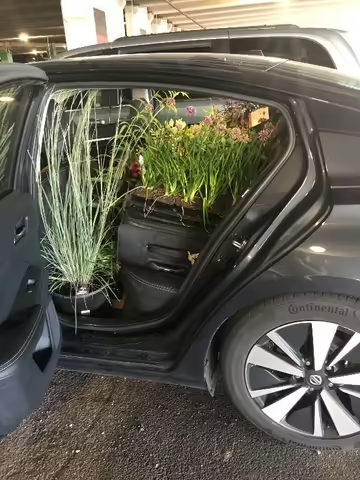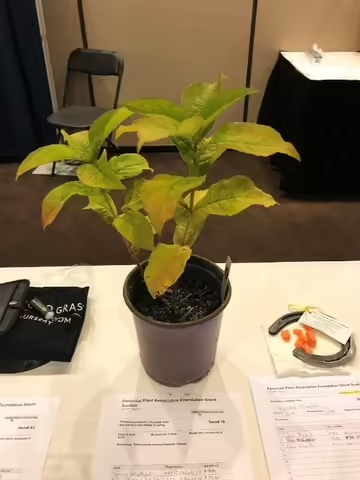Just when my garden is fully deserving of its “jungle” moniker, I attend the 2019 Perennial Plant Association (PPA) National Symposium in Chicago. Don’t get me wrong, I gained very valuable information throughout the program but the opportunities to bid on or just outright buy herbaceous perennials may not have been a good environment for a plant geek like me. Let’s just say my car was completely full and the suitcases were an afterthought.
One plant I picked up was Triosteum perfoliatum ‘Chocolate River,’ which is an Illinois nativar from Intrinsic Perennial Garden. The species type, referred to as late horse gentian, is a member of the honeysuckle family (Caprifoliaceae) and is also known as feverwort, wild ipecac and wild coffee, the last name evidently because the berries are reported to resemble coffee beans. I’m not going to test why it is also called wild ipecac. Compared to the straight species, ‘Chocolate River’ is described as having red-chocolate foliage in the spring. If I can keep the deer from munching it down, this plants should make an excellent addition to my jungle for long-tongued bees, bumblebees and snowberry clearwing larvae (hummingbird moth).
In addition to plants at the symposium, I picked up a quote from Pete Oudolf that really resonated with me, “You aren’t weeding, you’re editing!” We have a tendency to say weeding, when in fact we are doing so much more…removing weeds obviously, but also “editing” the relative proportion of each individual plant within the planting. In mixed plantings, some plants are more completive than others, and need to have their numbers reduced occasionally to allow less completive plants the space needed to survive. It also follows that less competitive plants should be planted in a relatively higher number to give them a better chance of surviving. In my jungle, I regularly “edit” out hybrid anemones (Anemone x hybrida), skullcap (Scutellaria sp.), cat mint (Nepeta sp.), Monarda, Rudbeckia and Phlox just to name a few of my thugs…otherwise they would happily choke out a lot of desirable plants, abeit being beautiful while doing it.
If you are like me and have a fondness for collecting Siberian bugloss (Brunnera macrophylla), you’ll like this. I have created a video for comparing the cultivars.
I recorded the images from the variety trial at the Gardens at Ball, West Chicago, IL as part of my PPA National Symposium experience. The trial includes the straight species, sixteen cultivars currently available in the marketplace and an additional five experimentals under evaluation. Once established, Siberian bugloss is a good alternative to Hosta for those dry, shady conditions. Like most plants that tolerate dry conditions, getting established is the key. They still need supplemental watering during dry conditions until they are established. From experience, the straight species more readily forms a groundcover than its cultivars, though given time, they will as well. Two cultivars, ‘Variegata’ and ‘Hadspen Cream’ will leaf burn if planted in too direct of sunlight.
Well, it’s that time of the year to plant iris and all the plants I brought home from the PPA National Symposium. Naturally, the ground is rock hard, but I have a tool for the job. Meet my new best friend, the PowerPlanter non-slip hex drive, 3”x7” bulb and bedding plant auger! I already had the smaller version (2”x7”) and it is GREAT for planting bulbs, but a regular sized daffodil is about the limit. With the larger auger, I just planted half a tray of prairie dropseed in 2.5” pots in no time flat, and just as easily a flat of blue sedge in 3” pots. These augers are far superior in quality and ease of use, but they do cost more. In my opinion, worth it. My arthritic hands never want to go back to that cheaper long-shanked auger that has no grip in the chuck or the hand numbing hand trowel method. Up next, bulbs!


